It Can’t Be Business as Usual
It’s been more than a couple of months now since the Ukraine invasion by Russia. What makes this difficult at work right now is that most of the teams I work with have a number of both Ukrainian and Russian team members. One just can’t ignore that fact with what’s going on in the world. As someone working remotely in the US, I don’t necessarily feel the burden as intensely, but I can definitely see the stress and strain on my European-based colleagues. Sometimes, the stress and strain are reflected on their faces; other times, it’s reflected in the tone and cadence of their voice. Inasmuch as everyone is trying to do work and not bring up anything, you can’t help but notice.
Unfortunately, you can’t do as you normally would – the work environment can’t be business as usual in these circumstances.
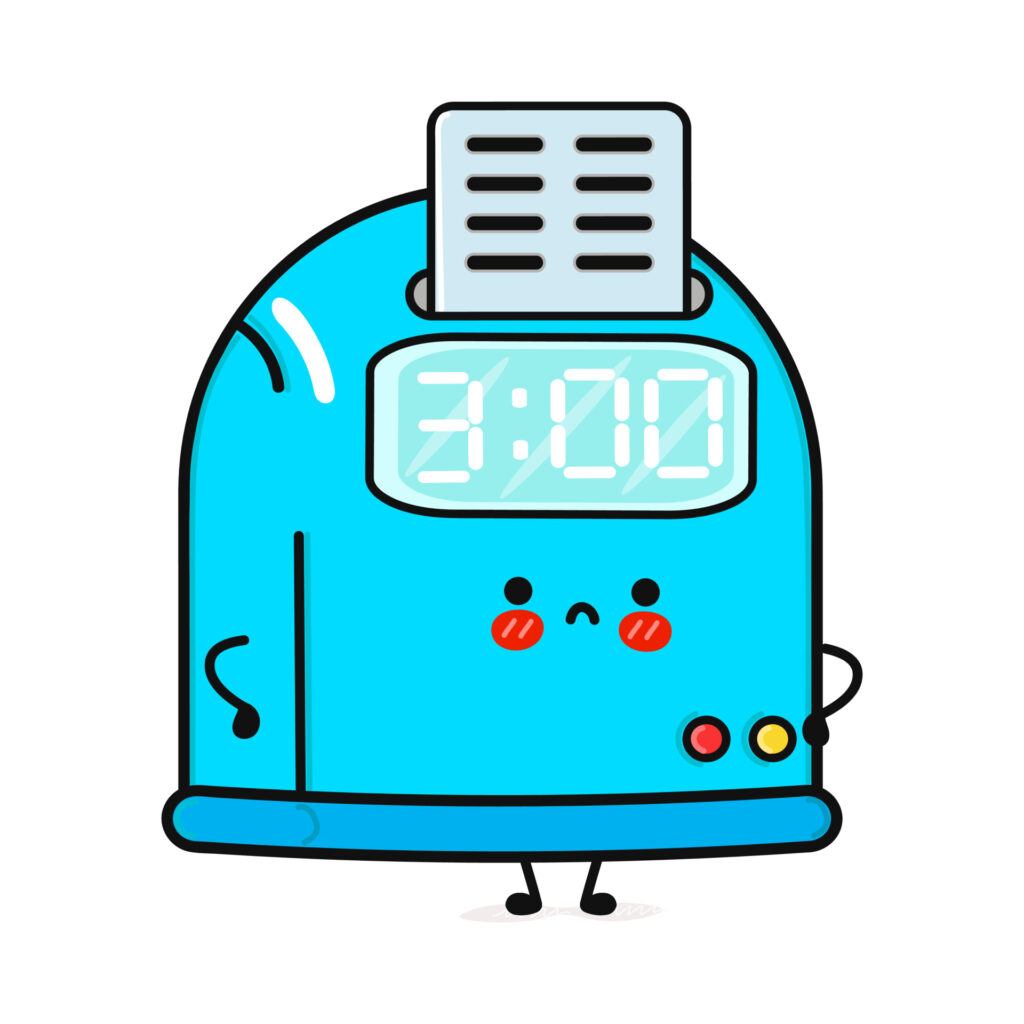 Of late, I’ve seen people and companies on LinkedIn try to stay neutral and not mention anything or take a stand one way or the other. But in my case, with the founders of the company also made up of Ukrainians and Russians, it’s tough to proceed as if nothing has happened. Especially at the team level, I or anyone on the team can’t ignore what’s really going on.
Of late, I’ve seen people and companies on LinkedIn try to stay neutral and not mention anything or take a stand one way or the other. But in my case, with the founders of the company also made up of Ukrainians and Russians, it’s tough to proceed as if nothing has happened. Especially at the team level, I or anyone on the team can’t ignore what’s really going on.
So what’s one to do? What can I do to assist the teams that I coach?
One of the things that I’ve grown fond of and quite adept at is to use Liberating Structures to foster collaborations between people that are engaging and, at times, fun. But in this scenario, to have something fun is inappropriate (and definitely tone-deaf). So I thought, what if I run an experimental Liberating Structure called Grief Walking with my teams to address the proverbial elephant in the room?
The Grief Walking structure allows “a safe way to reflect on and share their experience of loss, transition, or grief with others” in a supportive environment free from judgment. The purpose of Grief Walking is for the speaker to be heard and for the listeners to commiserate and offer support to the speaker.
The keyword here is support – which means acknowledging what the speaker is going through and supporting them by putting the listener’s hands on the speaker’s shoulder. Nothing else. No words of advice, no platitudes of encouragement. Just acknowledgment with the hand on the shoulder.
With this idea in mind, I approached the team lead for one of the teams I was working with and told her about my idea and how we might address the current situation. I suggested we take our usual retrospective and use it this time to run the Grief Walking exercise. After explaining what Grief Walking was, she thought it was a good thing to try. Everyone on the team was affected, no matter their background.
I approached her specifically and proposed this because I had a good relationship with her. Also, she was the product of both cultures. Her family is a blend of both Ukrainians and Russians who got married and had children like her over the years. I wanted to ensure she felt safe and was willing and open to doing this. If I could get her buy-in, I knew the other folks on the team would agree as well. With her agreement in tow and letting the team know of our plans for the next retrospective, my next task was redesigning Grief Walking for a remote audience since I would lead it from the SF Bay Area while everyone else was in our European offices.
After some thinking and designing, I devised a design and put it on a Miro board to use during our Zoom meeting.
Grief Walking for Remote (or Hybrid)
I followed the steps outlined in the Grief Walking document from the Liberating Structures site. However, given that the meeting would be remote, I had to ensure that instructions were clear and well-understood before we embarked on the Grief Walk. I was asking people to be vulnerable in this session, and I wanted to ensure I was building a safe environment. I put all these instructions into my Miro board.
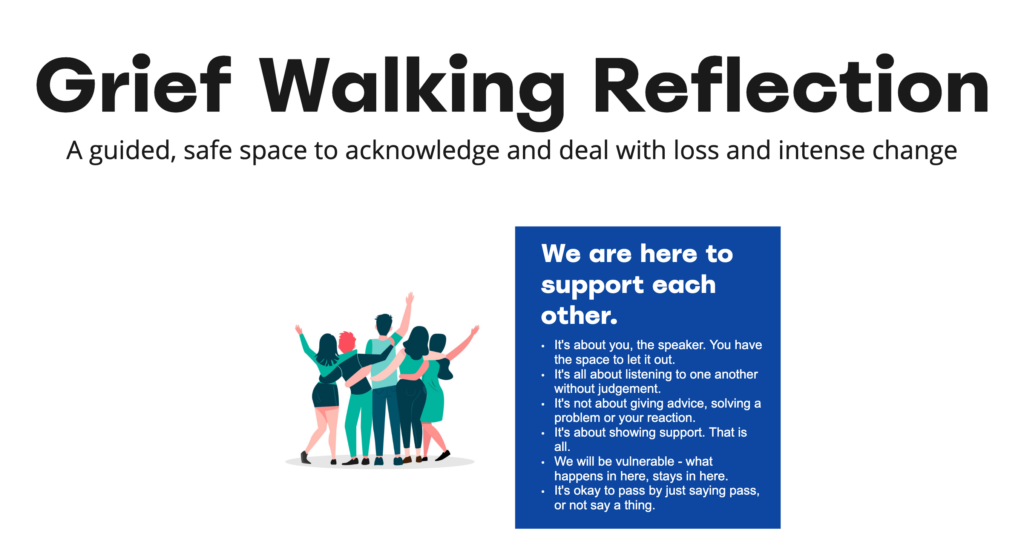
So, the first thing I put up was an introduction to Grief Walking, what it is, and what it’s supposed to do. I explicitly stated what it is (a space to be heard), what it is not (advice), and such.
I then gave specific instructions for Spiral Journal. Spiral Journal is another Liberating Structure under development. When I first heard about it, I found it intriguing after hearing how it’s supposed to be run. When I experienced it, I found that drawing the spiral before asking the question obscured all the distractions around me and allowed my brain to calm down. Once I heard the question, I found my answers flowing unencumbered out of me. Other people said more or less the same thing.
The questions for each quadrant are key in ensuring the Grief Walk session is effective. I slightly modified the questions from the Grief Walking document to make them more appropriate for our session.
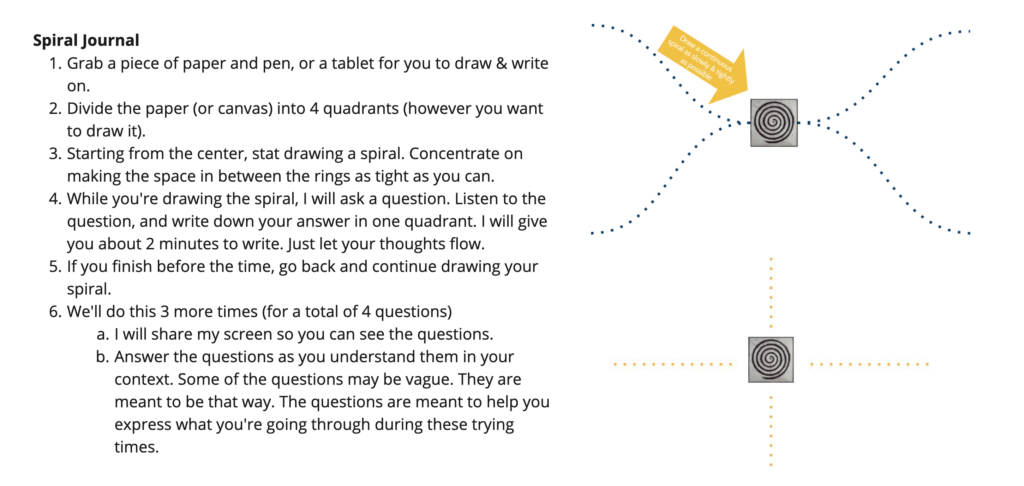
Spiral Journal Instructions
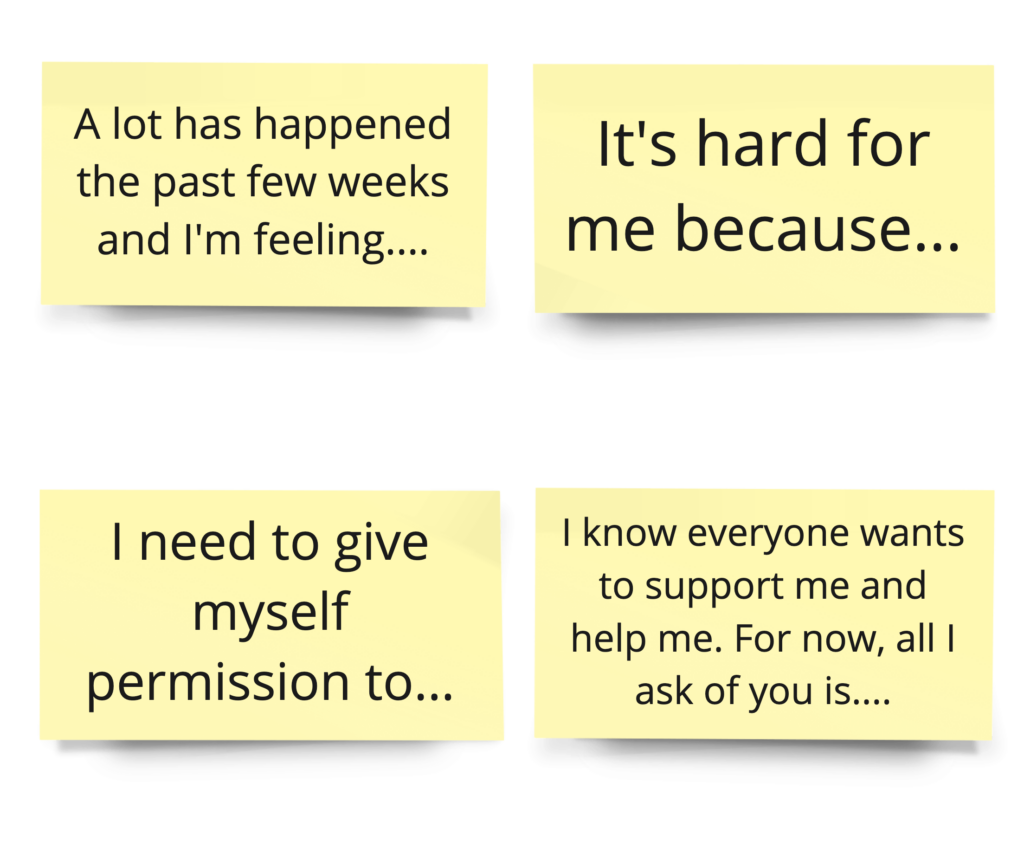
Spiral Journal Questions
The last piece on the board was the instructions for the grief walk itself. Again, I clearly outlined the acceptable responses and the unacceptable ones. One thing that you might notice is the three ways in which you can express the same supporting message. I gave people these options because I needed to figure out how people would respond or if they could respond during the grief walk. I wanted to ensure that people could engage and participate, whether they had their cameras on or not, and whether they wanted to speak verbally in support of their colleagues or not.
The Result
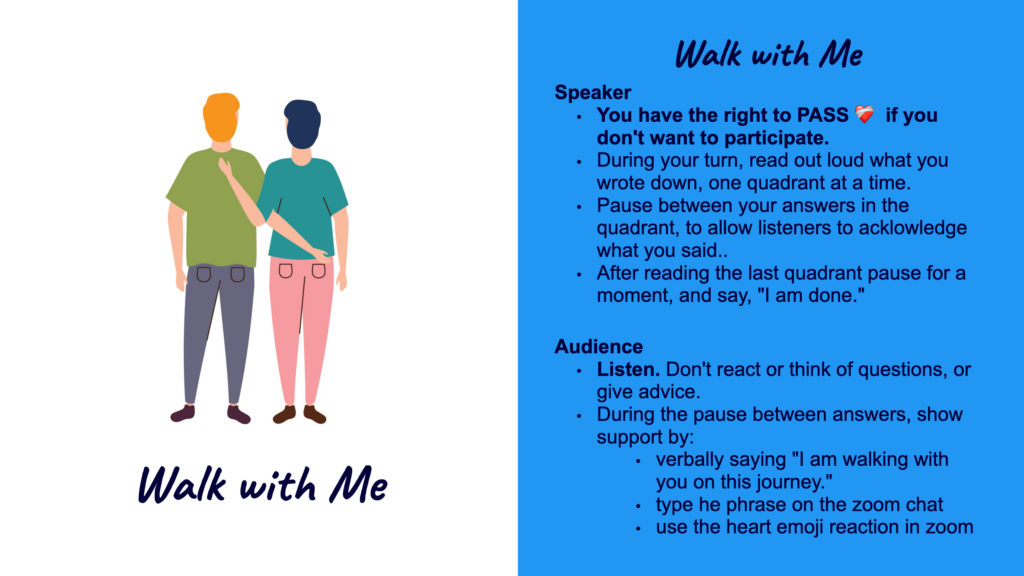
I ran this at 6:30 a.m. Pacific time, which was 3:30 p.m. Central European time. (Yes, I’m up and at work by 6 a.m. Yes, I go to bed at around 10 p.m.) At the beginning of the session, I went through all the steps slowly and repeated them a second time slightly faster before proceeding. I told people they could choose to have their cameras on or off. I mentioned that things could get emotional and that it’s okay. I made sure that each person had the option to pass and not participate. And I also invoked the old Vegas rule – what is said and transpires in the session stays as such.
At the end of our reflection, I asked for quick feedback on how the session went. The entire team said that it was a much-needed session that helped them unburden some of the feelings they had inside. Yes, there were periods when people’s voices cracked, but we each gave each other the grace and space to express ourselves however we wished. In the end, the people said they felt a little lighter at the end of that day. They all appreciated each other and quietly understood where each person was and what they were going through (without acknowledging the details – remember, Vegas rule).
My Reflections as a Facilitator
A couple of things come to mind as a facilitator. For one, my design turned out good, if not better, than I had initially thought. Yes, I had my doubts about doing the Grief Walk remotely. But I think my investment in the instructions on the board and in setting the tone at the beginning (to create a really safe space for vulnerability) helped create a successful moment.
One thing I might change is not to do this first thing in the morning. Some of the words expressed by the team were deeply moving, and at times, I had to keep my emotions in check. It was hard not to cave into crying. I definitely was trying to withhold my tears during the session. At some moments, I had to turn off my camera (like some of the other participants) to give me a breather.
If I were to do this again, I’d do it after spending an hour preparing myself emotionally. Since it was my first time, I only gave myself 30 minutes after waking up to run this session. I thought I had prepared myself well. But apparently, it wasn’t enough. So, for the next shot, I’ll give myself an hour at least to prepare.
The Grief Walking Board.
I’ve embedded a copy of the Grief Walking Miro board that I designed so you can look at it. Feel free to download the Miro backup file and use it as a template backup or share it with others (and please don’t remove the Creative Commons license if you do share). Here are the instructions on how to restore (load) the Miro backup file to your own board.
The Miro Board for Grief Walking Reflection
Grief Walking Reflection for Remote (Hybrid) © 2022 by JF Unson
is licensed under Attribution-NonCommercial-ShareAlike 4.0 International
![]()